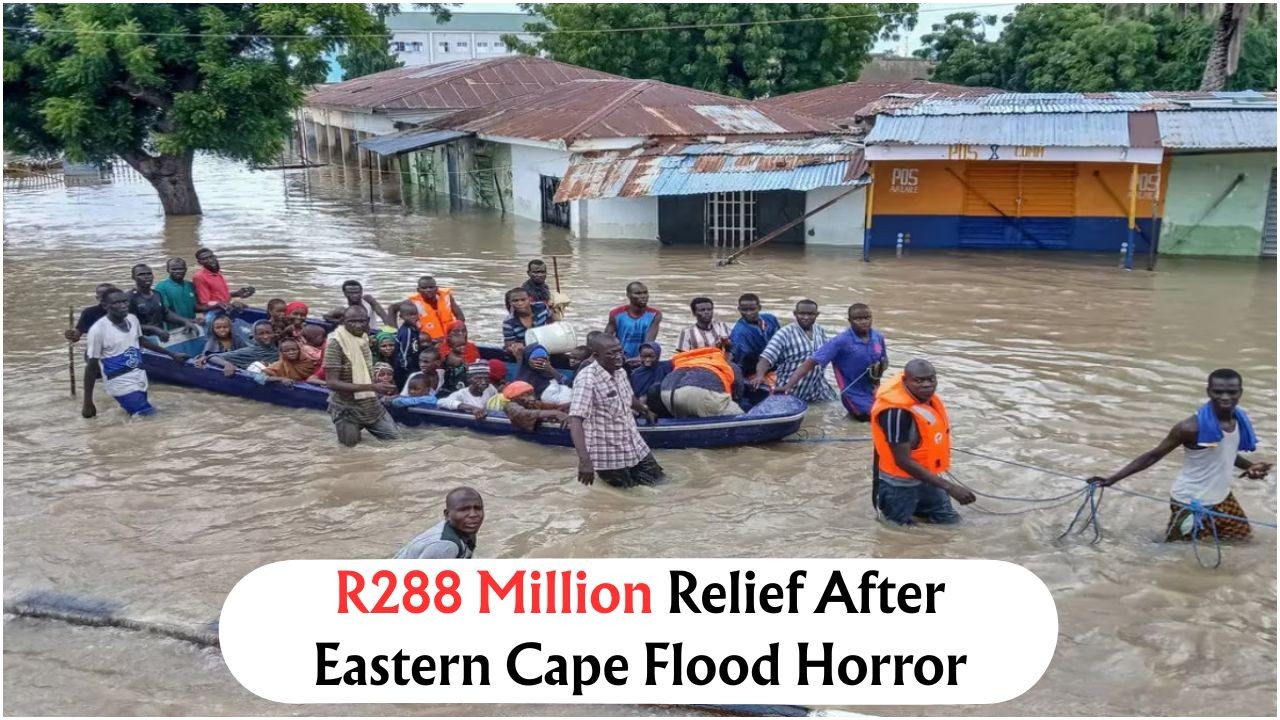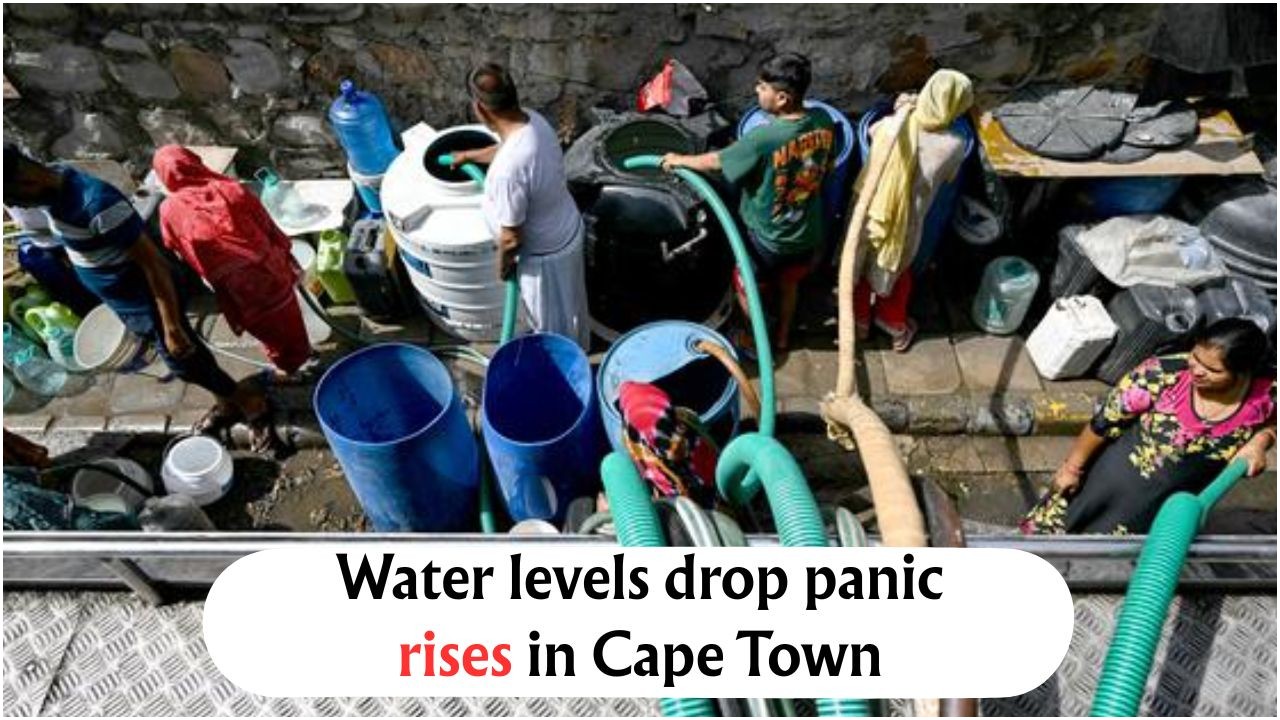Eastern Cape Flood Tragedy Relief: In the wake of the devastating floods that recently swept through the Eastern Cape, the South African government has stepped up with a promise of R288 million in relief aid. This significant pledge comes after the tragic loss of 103 lives, marking one of the worst natural disasters in the region’s recent history. The relief package aims to address both immediate needs and long-term recovery plans, ensuring that affected communities receive the support they require to rebuild and recover. As the province grapples with the aftermath, the focus is on restoring infrastructure, providing essential services, and supporting those who have lost homes and livelihoods.
Government’s R288 Million Pledge for Eastern Cape Flood Relief
The South African government’s commitment of R288 million is a crucial step in addressing the widespread devastation caused by the floods in the Eastern Cape. This funding is earmarked for a variety of relief efforts, including the restoration of essential infrastructure such as roads and bridges, which have been severely damaged. Additionally, the funds will support the provision of emergency services, ensuring that affected residents have access to medical care, clean water, and basic necessities. The government has highlighted the importance of collaboration with local municipalities and NGOs to effectively implement these relief efforts, emphasizing the need for a coordinated response to maximize the impact of the allocated funds.
- Rebuilding damaged infrastructure
- Providing emergency medical services
- Ensuring access to clean water and food
- Supporting displaced families
- Collaborating with local organizations
Impact of the Flood Tragedy on Eastern Cape Communities
The impact of the recent floods on the Eastern Cape has been profound, with communities experiencing significant loss and disruption. Many residents have been left homeless as their homes were either damaged or completely destroyed by the rising waters. The agricultural sector, a vital part of the local economy, has also suffered greatly, with crops and livestock lost, affecting food security and livelihoods. Schools and health facilities have been submerged, disrupting education and healthcare services. The psychological toll on affected individuals and families cannot be overlooked, as they grapple with the trauma of losing loved ones and the daunting task of rebuilding their lives.
 Urgent Storm Surge Alert for Coastal SA: Eastern Cape and KZN Residents Advised to Seek Safety
Urgent Storm Surge Alert for Coastal SA: Eastern Cape and KZN Residents Advised to Seek Safety
| Area | Impact | Assistance Required |
|---|---|---|
| Housing | Widespread destruction | Reconstruction and temporary shelters |
| Agriculture | Crop and livestock loss | Aid for farmers and food security |
| Health | Facilities damaged | Mobile clinics and medical supplies |
| Education | Schools flooded | Rehabilitation of schools |
Long-term Recovery Plans for Eastern Cape Flood Victims
In addition to immediate relief efforts, the government has outlined long-term recovery plans to help Eastern Cape communities rebuild and become more resilient to future natural disasters. These plans include the construction of flood-resistant infrastructure, such as elevated roads and bridges, and the implementation of better water management systems to prevent future flooding. The government also aims to invest in community-based disaster preparedness programs, educating residents on how to respond to natural disasters and minimize risks. Economic recovery initiatives are also on the agenda, focusing on reviving local industries and supporting small businesses to stimulate economic growth in the affected areas.
- Building flood-resistant infrastructure
- Improving water management systems
- Disaster preparedness education
- Reviving local economies
Community and Government Collaboration for Relief Efforts
Effective collaboration between the government and local communities is essential for the success of the relief and recovery efforts in the Eastern Cape. The government has called on community leaders, NGOs, and international partners to work together in implementing the relief programs. By leveraging local knowledge and resources, the response can be more targeted and efficient. Community involvement is also crucial in ensuring that aid reaches those who need it most and that recovery efforts are sustainable. The government has committed to transparency and accountability in the distribution of funds, emphasizing the need to rebuild trust and ensure that resources are used effectively.
| Stakeholder | Role | Contribution |
|---|---|---|
| Government | Funding and coordination | R288 million relief package |
| Local Municipalities | Implementation | Infrastructure repair and community support |
| NGOs | Humanitarian aid | Distribution of food and medical supplies |
| Communities | Local knowledge | Identifying urgent needs and priorities |
Resilience Building in Eastern Cape Flood Zones
The focus on resilience building is a critical component of the government’s long-term strategy for flood-prone areas in the Eastern Cape. By investing in infrastructure that can withstand extreme weather events, the government aims to minimize future damage and disruptions. Community-based initiatives will play a key role in this effort, as local residents are empowered to take proactive measures in protecting their homes and livelihoods. Educational programs will be implemented to raise awareness about climate change and its impacts, promoting sustainable practices that contribute to environmental conservation and disaster risk reduction.
- Investing in durable infrastructure
- Empowering local communities
- Educating about climate change
- Promoting sustainable practices
- Reducing disaster risks
Challenges in Delivering Flood Relief to Eastern Cape
Despite the comprehensive relief plan, several challenges remain in delivering effective aid to the flood-affected areas of the Eastern Cape. The region’s rugged terrain and damaged infrastructure pose significant logistical hurdles, making it difficult to reach remote communities. Additionally, the scale of the disaster has put pressure on available resources, highlighting the need for efficient coordination and prioritization of aid distribution. Ensuring transparency in the use of funds is also a challenge, with the government under scrutiny to demonstrate that the relief package is being used effectively and equitably.
- Logistical challenges due to terrain
- Resource allocation pressures
- Coordination of aid distribution
- Transparency in fund usage
FAQ: Eastern Cape Flood Relief Efforts
What is the total amount pledged by the government for flood relief in Eastern Cape?
The government has pledged R288 million for flood relief efforts in the Eastern Cape.
How many lives were lost in the Eastern Cape floods?
A total of 103 lives were tragically lost due to the floods in the Eastern Cape.
What are the main areas of focus for the relief efforts?
The relief efforts focus on rebuilding infrastructure, providing emergency services, and supporting displaced families.
How is the government ensuring transparency in the relief efforts?
The government has committed to transparency and accountability in the distribution of relief funds, working closely with local communities and NGOs.
What are the long-term plans for recovery in the Eastern Cape?
Long-term plans include building flood-resistant infrastructure, improving water management, and reviving local economies.









